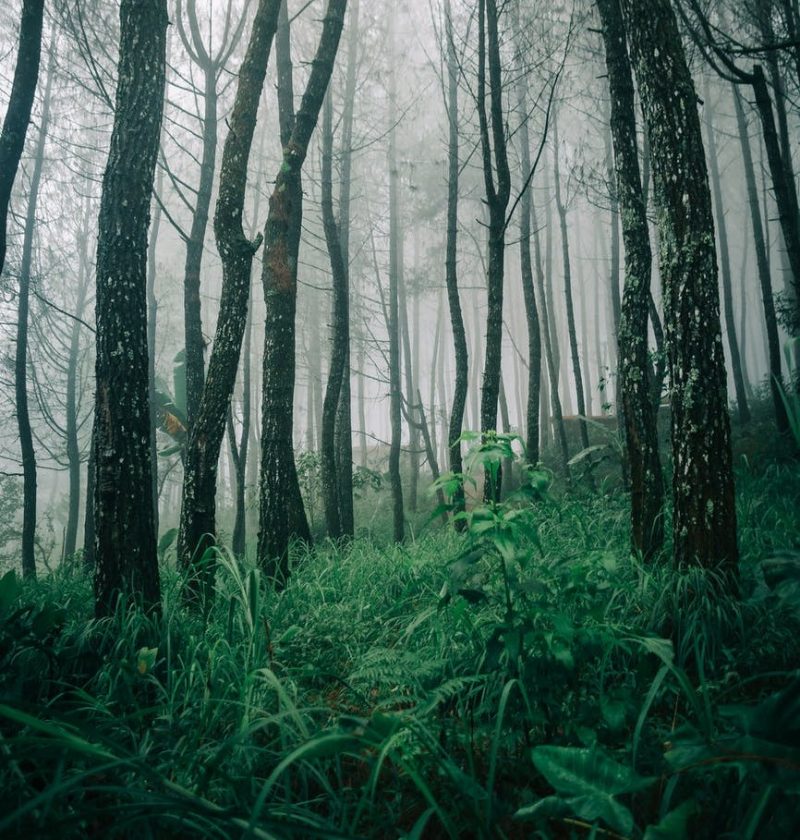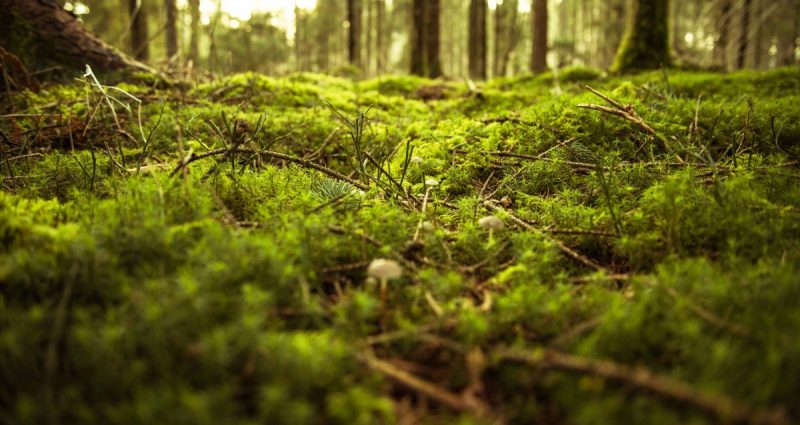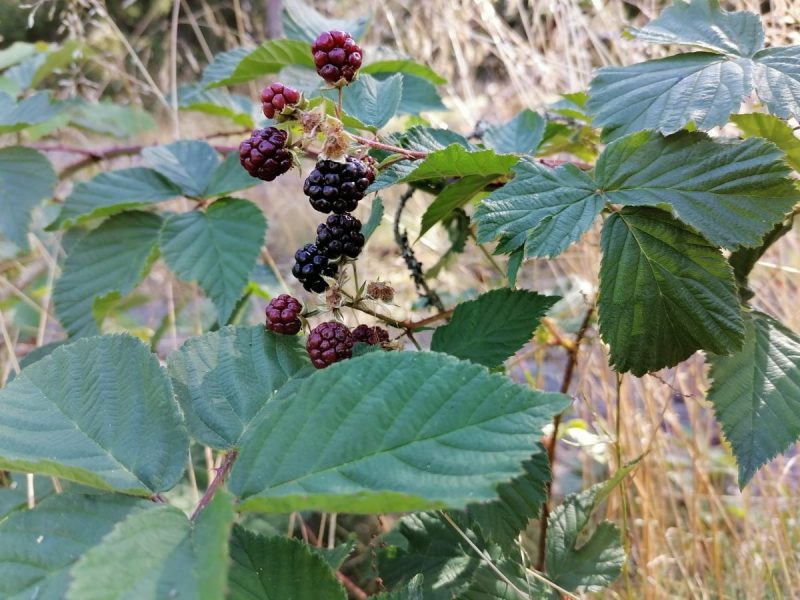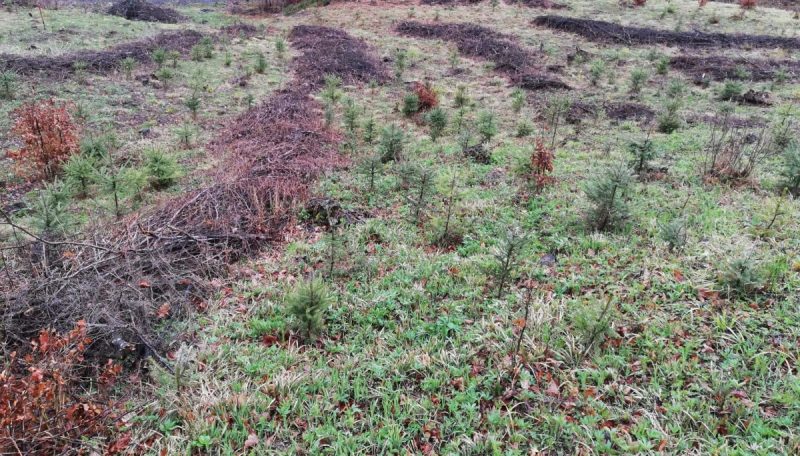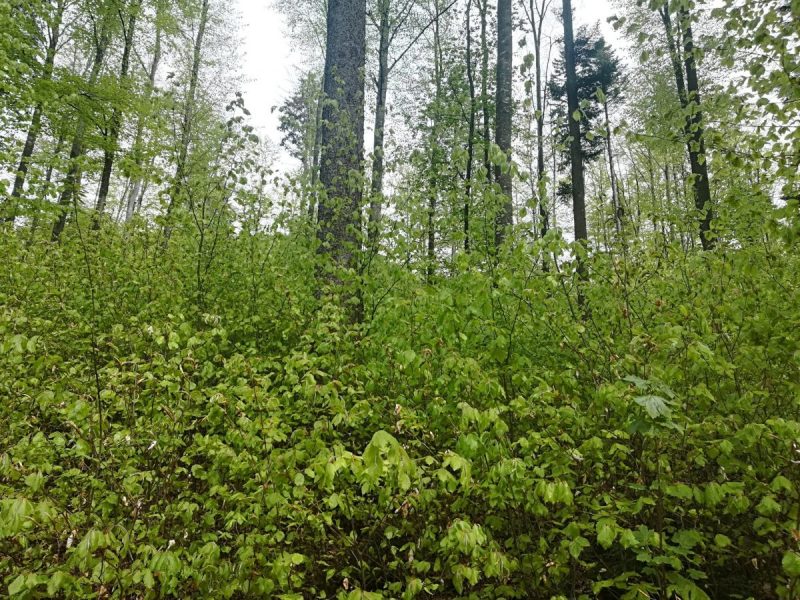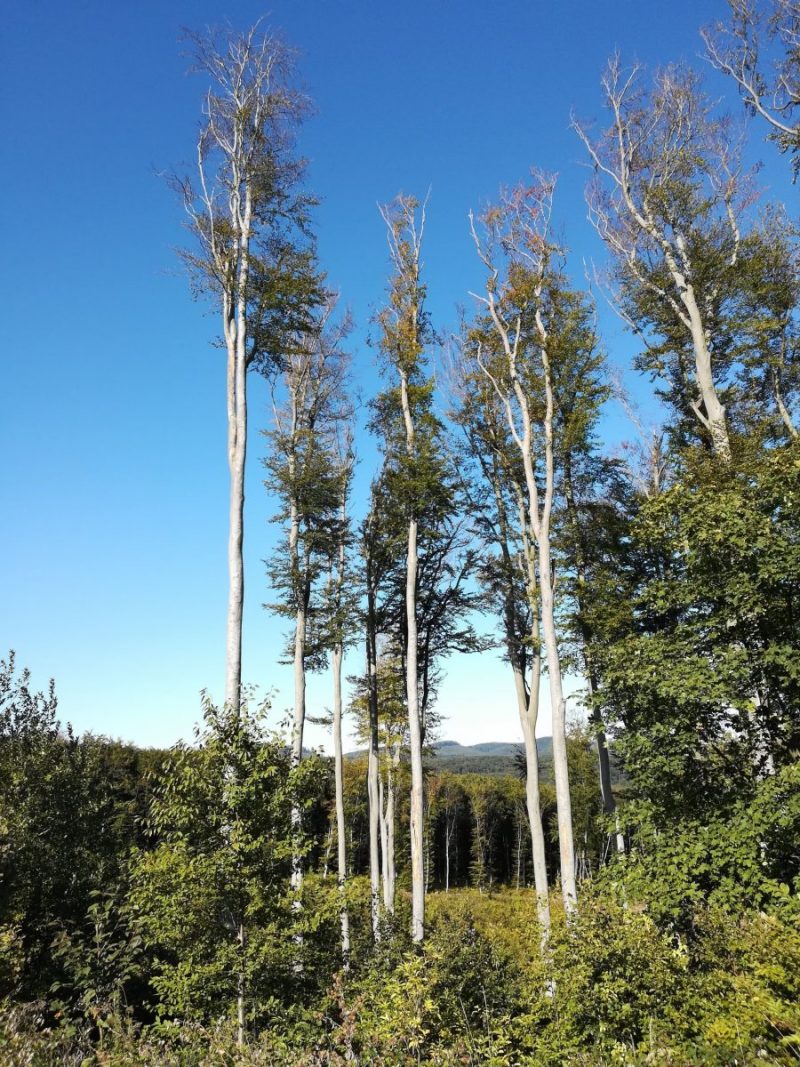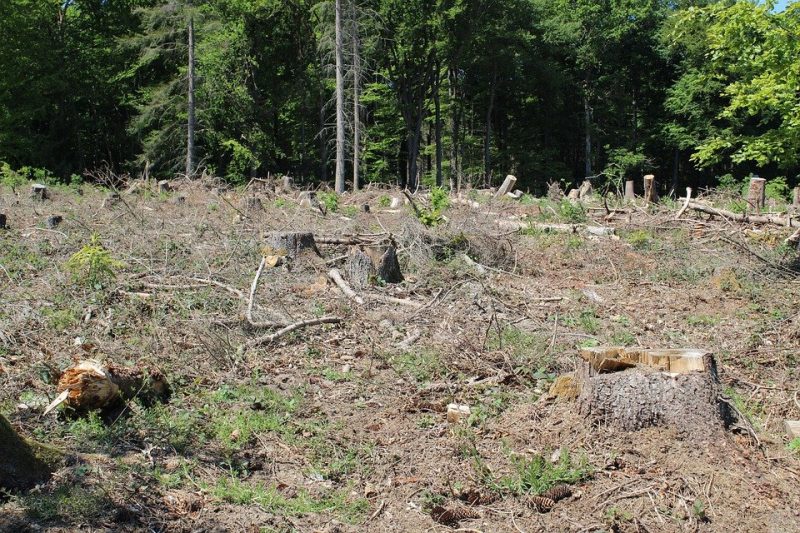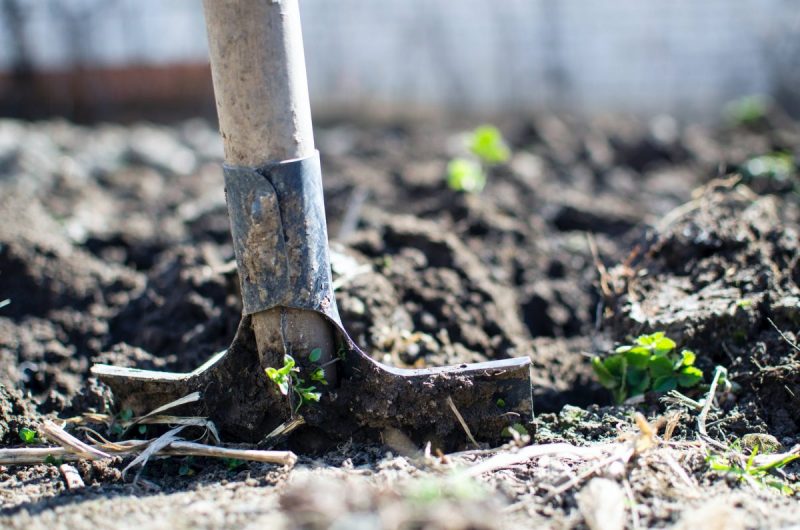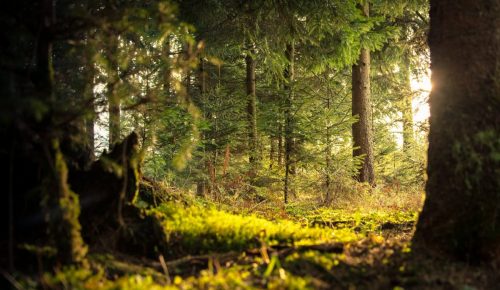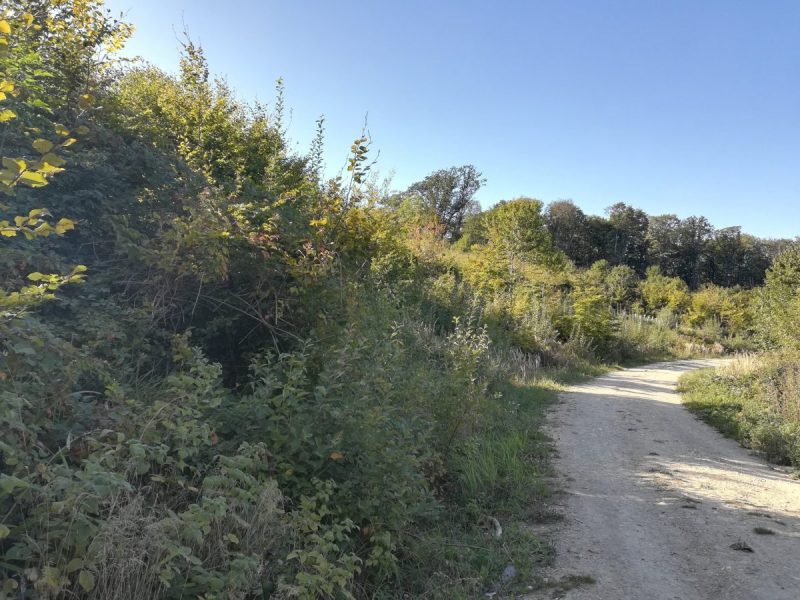Forest regeneration, advice and methods

Forest regeneration can be done in three ways:
- natural regeneration (by seeds, sprouts, root suckers);
- artificial regeneration (by direct artificial sowing, planting, or laayering);
- mixed regeneration (natural and artificial regeneration in the same plot).
Depending on the requirements of the old forest stand and the requirements of the species that make up the seedling layer, regeneration can be done under the shelter of the old forest stand, on open ground, or in the forest border.
Regeneration under the shelter of the old forest stand
It involves the gradual thinning (opening of the canopy) of the old forest stand. When the regeneration becomes biologically independent (it reaches heights of 15-80 cm, depending on the species), the old stand is completely removed. If the mature trees are not removed at the right time and the installed seedling reaches higher heights, it becomes an unusable seedling, (easily damaged by exploitation). In addition, the old trees can be a barrier to the normal development of the bigger seedlings, which need enough light, water, and nutrients.
The shelter of the old trees offers favorable conditions for the installation and development of the seeds of some species, such as oaks, beech, fir, and others. The seedlings are sheltered under the crowns of mature trees, which provide protection against frost, sunburn, and weeds.
Regeneration under shelter can be achieved by the following forestry interventions:
- gradual and uniform harvesting of trees (successive);
- gradual and irregular harvesting of trees (progressive);
- continuous harvesting of trees;
- vegetative regeneration under shelter (in coppice-with-standards stands).
The natural regeneration under shelter is made with the seed of the mature trees from the stand, or by sprouting (in the case of coppice-with-standards stands). In case of unsuccessful, incomplete, or compromised natural regeneration, artificial afforestation or gap fillings are carried out (usually by planting seedlings).
Recommended products
-
You can find products on a different store
Change Store -
You can find products on a different store
Change Store -
You can find products on a different store
Change Store -
You can find products on a different store
Change Store -
You can find products on a different store
Change Store -
You can find products on a different store
Change Store -
You can find products on a different store
Change Store -
You can find products on a different store
Change Store -
You can find products on a different store
Change Store -
You can find products on a different store
Change Store -
You can find products on a different store
Change Store -
You can find products on a different store
Change Store -
You can find products on a different store
Change Store -
You can find products on a different store
Change Store -
You can find products on a different store
Change Store -
You can find products on a different store
Change Store -
You can find products on a different store
Change Store -
You can find products on a different store
Change Store -
You can find products on a different store
Change Store -
You can find products on a different store
Change Store -
You can find products on a different store
Change Store -
You can find products on a different store
Change Store -
You can find products on a different store
Change Store -
You can find products on a different store
Change Store
Regeneration on open ground
It is performed in the case of lands without forest vegetation (bare lands), forests destroyed by windfall, fire, or insect attack, respectively in the forest surfaces where clear-cutting has been applied.
The achievement of regeneration on open ground is difficult due to specific microclimatic conditions: extremes and sudden variations in temperature and humidity, strong wind, etc. However, there are species of trees for which regeneration under shelter is not suitable. The seedlings of these species are developing properly in full light conditions, being resistant to insolation, heat, frost, and other environmental conditions.
Methods of regeneration on open ground:
- artificial regeneration with seedlings and cuttings: after clear-cutting (spruce, pine, larch, black locust, hybrid poplars, willow, etc.);
- natural regeneration from seed: after strip cuttings (spruce, pine, larch, trembling aspen, birch, etc.);
- natural regeneration by stool shoots or root suckers: in copice stands (willow, trembling aspen, black locust, and others).
Recommended products
-
You can find products on a different store
Change Store -
You can find products on a different store
Change Store -
You can find products on a different store
Change Store -
You can find products on a different store
Change Store -
You can find products on a different store
Change Store -
You can find products on a different store
Change Store -
You can find products on a different store
Change Store -
You can find products on a different store
Change Store -
You can find products on a different store
Change Store -
You can find products on a different store
Change Store -
You can find products on a different store
Change Store -
You can find products on a different store
Change Store -
You can find products on a different store
Change Store -
You can find products on a different store
Change Store -
You can find products on a different store
Change Store -
You can find products on a different store
Change Store -
You can find products on a different store
Change Store -
You can find products on a different store
Change Store -
You can find products on a different store
Change Store -
You can find products on a different store
Change Store -
You can find products on a different store
Change Store -
You can find products on a different store
Change Store -
You can find products on a different store
Change Store -
You can find products on a different store
Change Store
Afforestation of bare lands. Such lands are meadows, pastures, agricultural lands, and unproductive lands. Afforestation involves the prior preparation of the land and soil, respectively the planting of seedlings produced in forest nurseries. In the case of species such as willows and hybrid poplars, afforestation by cuttings can be performed.
Regeneration in the forest border
The transition zone from forest to bare land is called forest border. Here, the characteristics of the stand, as well as the climatic conditions are different from those in the forest. Therefore, regeneration involves a different approach: the gradual thinning in strips, until the installation of the seedling under shelter, followed by the final clear-cutting. After that, the seedlings remain partially exposed (open ground conditions, with lateral protection from the trees in the forest).
Two strips are distinguished in the forest edge:
- the inner strip, where the seedling is sheltered by the old thinned stand (from above) and by the closed old stand (side protection);
- the outer strip, where the seedling is more exposed, benefiting only from the partial lateral protection (offered by the existing trees in the inner strip).
Promoting natural regeneration
In some environmental and stand conditions, forest regeneration is difficult or impossible. The process of natural regeneration can be assisted by the following works:
- Removing the thick litter. The undecomposed litter can be an obstacle in the germination process of the seeds. In seed years, the litter is removed in aprox. 1 m wide strips, and gathered in alternating strips. This work is carried out only if necessary, in beech, oak and spruce stands.
- Removal of raw humus. It is a specific work in spruce forest stands. The methodology is similar to the previous one.
- Removal of the invading ground cover. Rubus species and herbaceous plants, as well as the consistent layer of mosses, can impede the installation of the seedlings. They are removed during seed years, in strips, in bunches or on the entire regeneration surface.
- Removing the undergrowth. The existence of shrub species within the surface to be regenerated can impede the installation and development of the seedlings. In seed years, these species should be eliminated (partially or entirely).
- Removing non-usable seedlings. Seedlings of low economic value, invasive species and too dense or too vigurous seedlings are extracted in seed years, in the autumn.
- Soil mobilization. The work is performed if the soil is compacted, loamy, or has a thick layer of raw humus or grass. Soil mobilization can be performed in strips or in small areas, distributed as evenly as possible in the regenerated surface. The soil should be loosened at least on 50-60% of the surface.
- Cleaning of logging areas. Logging debris (especially branches) should be gathered in piles or strips. The strips are usually arranged along the line of the steepest slope.
